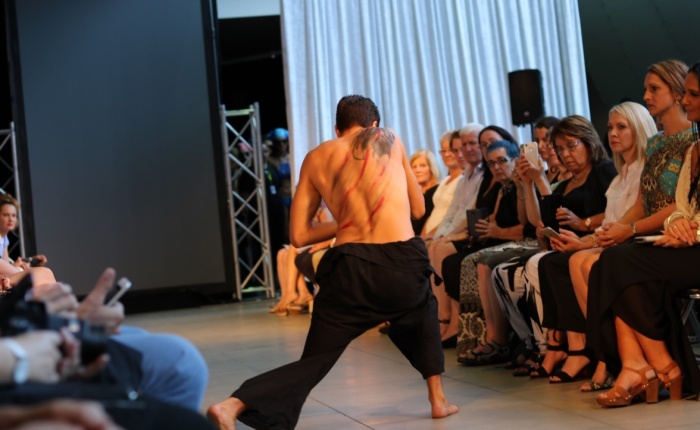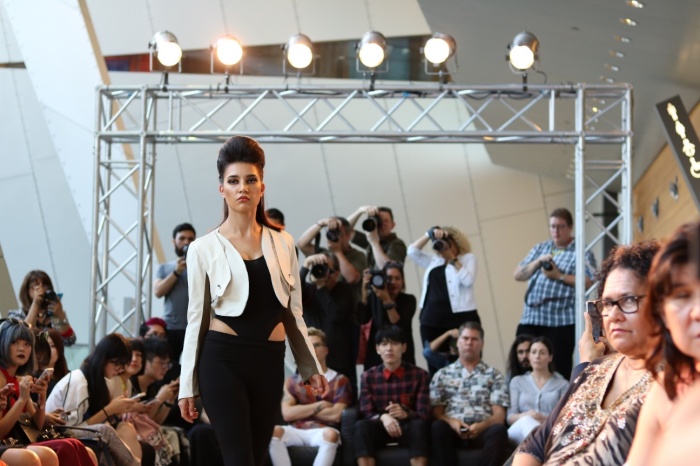Political journalism maintains various vital functions for the fluid operation of democratic society; but with evolving media platforms, audiences and reportage – this form of journalism has had to adapt to survive. This essay will concentrate on how political journalism has been forced to transition towards fulfilling a more entertainment-centric role in news media, but in doing so has ensured its ability to perform the democratic functions expected of it. Several layers of theoretical analysis will be applied to this argument to better engage with the complexity of modern media systems, beginning with the underlying structural changes of news media and how they’ve influenced the contemporary adaptation of political journalism. A further factor of these changes can be seen in the shifting importance of audience interest and access in an increasingly competitive media landscape, featuring professionalised political machines. The rise of adversarial journalism is key to this debate, using satire as a response to both the domination of entertainment news in the political sphere, and the complex relationships news media now shares with consumers. A case study of the 2016 United States election coverage, incorporating the pivotal role of ‘fake news’, will be used to highlight how the modern form of political journalism is successfully engaging citizens in democratic progress.
Political journalism; adapting to survive in a new media climate
Structural changes in news media have been the most influential driver of political journalism reform, following the boundaries of entertainment style news. This definitive shift in news media presentation is a result of several underlying structural processes including: the declining authority of the press gallery, competition from media markets, diminishing resources but most importantly the way political journalism has been rapidly subsumed by entertainment content in new media (Bolin, 2014, p. 336-349). The Reithan mantra developed for the origin of the BBC elucidates that the role of journalism is to “entertain, inform and educate,” especially regarding broadcast news, where the bulk of political communications circulate today (Holtz-Bacha and Norris, 2000, p. 123-140). With greater availability of all genres of content, audiences can abandon any form of political news by customising their intake of information to tailor their views (Prior, 2005). Key to this argument is not that contemporary political journalism is failing citizens because it has incorporated elements of entertainment, but that its effectiveness is overshadowed by the sheer volume of entertainment content. Markus Prior (2005) argues that there’s a duality to the way emerging digital markets impact political journalism; optimistically and pessimistically. The first view suggests that the increased availability of political information from new media, means journalists have increased opportunity to engage citizens in democratic process. Conversely, the pessimists argue the entertainment that springs from new media content hinders citizens from fulfilling democratic responsibilities, such as informed voting. Postman (1985) put it “amusing ourselves to death” as a result of the growing influence entertainment media has on the news. This feeds into the idea of news as entertainment, which historically can be traced to the soft-news tabloids and yellow journalism of the 1930s (Campbell, 2001, p. 209) – where news masquerades as entertainment to satisfy bored consumers (Holbert, 2005, p. 436). Modern political journalism doesn’t pretend to be entertaining, it has simply adapted to the tastes of emerging digital markets – a response to a rapidly evolving news consumption-culture that produces informative material very distinct from what traditionally would be labelled political journalism (Boler and Turpin, 2008, p. 383-404). These structural changes outlined impact the operation of modern political journalism, because they blur boundaries. Brian McNair (2006) in Cultural Chaos argues that with the pressures from new media advancements, the boundaries between news and entertainment are almost invisible. Both avenues of news media exist, they are simply indistinguishable from each other, which isn’t necessarily negative as with the more engaging entertainment content produced, vicarious political awareness is obtained (Bartsch and Schneider, 2014, p. 369-396). Underlying changes in media structures have catalysed reform in the production of political journalism and ushered in an era of entertainment-centric coverage that still manages to engage citizens in the process of democracy.
Engaging powerful audiences in competitive digital markets
Audiences have become increasingly pivotal to the effectiveness of modern political journalism, as splintering consumer groups and a competitive media landscape weaken the traditionally large markets that mass media once served. As platforms have diverged, classic forms of political reportage have become less attractive to new media markets (Kuhn and Neveu, 2013, p. 22-40). The competition to entice and inform citizens has grown exponentially, mainly attributed to the burgeoning professionalization of politics. Louw (2005) argues that this expansion of the news media landscape facilitates political discourse in a way that negates mass-propaganda and audience manipulation, however political journalism has become a site of struggle against professionalised media machines for audience engagement (McNair, 2009, p. 237). Currently, political journalism doesn’t only have to battle for the attention of audiences, but has to do so against an extremely professionalised political system that thrives on the entertainment-centric values of new media (Louw, 2005). This “PR-isation” (Louw, 2005, p. 5) revolves around the shift towards personality in politics, something that the rigidity of traditional political journalism catered for less. Professionalisation of politics occurs through public relations, spin and the marketing of personal-political identities through traditional news media but more importantly by directly engaging citizens through social media and advertising. In a strong entertainment-centric media climate, selling personality over policy has become dominant and forced political journalism to become facile to meet changing content preferences. Neveu (2002) concedes that for political journalism to succeed in these sites of struggle against professionalised politics, it must widen the definition of what audiences consider to be political. This concept involves linking private lives and character to political journalism, broadening the notion that what is personal is also political – this has been successful in rebranding what political journalism functions as in society and has kept it relevant in democratic progress when combatting “PR-isation”. It’s a way of engaging in battle in entertainment media but also maintaining the functions that have made political journalism so integral to democratic society (Sobieraj, 2010, p. 505-528). Engaging audiences is a competitive process in entertainment-centric political coverage but is necessary for modern political journalism to enter into these sites of struggle in order to fulfil its role in a democracy.
The evolution of adversarial journalism in political coverage
In an increasingly competitive media environment that promotes values of entertainment-centric content, political journalism has had to evolve a different form of coverage to engage audiences in democratic progress. Effectively engaging citizens in modern democracy has led to journalism becoming adversarial, to fulfil a space where traditional political journalism has struggled to thrive. Adversarial journalism understands the tenuous relationship that the press shares with the political sphere including key actors and professionalisation (Blumer and Gurevitch, 1995, p. 25-44). This form of coverage is critical and impactful, scrutinising the conduct and rhetoric of political actors, pivoting on the conflicts of interest they share – a response to the soft political infotainment that preceded it. Where policy based coverage lacks the attention that spin and advertisements garner from political campaigns, adversarial journalism triumphs in effectively appealing to audiences by challenging the personalities and narratives that political communications form in entertainment-centric new media. It’s key that political journalism functions this way in order to serve a watchdog role in democratic society, keeping the politicians who represent its audience accountable. As adversarial journalism is a response to soft political coverage, satirical content confronts the professionalised politicians that exist within this realm. Satire or “fake news” as political satirist and former The Daily Show host Jon Stewart labelled it, is itself a form of political commentary used to help audiences locate themselves within participatory democracy – the laughter it attracts signifies the consent of viewers (Allan et al.,2009). Stuart Allan (2009) highlights how satire as an element of adversarial journalism is so effective in combatting the professionalised politics of an entertainment-centric media. It seeks out grabs, uncertainty and contradiction; this satire-laced political journalism challenges the narratives carefully constructed by politicians and scrutinises them through comedy and juxtaposition – drawing audiences into a critical analysis of their elected officials (Allan et al.,2009). This provides a method for news media to utilise more traditional techniques of investigation and scrutiny in their coverage whilst maintaining the important aspect of entertainment as news, which modern audiences have come to value. What’s so important about these programs for increasingly media dependent audiences is that they provide traditional, hard-hitting journalism, through a comfortable frame by which audiences unconsciously construct their reality. Mostly presented through television programs but now spreading rapidly to video sharing services and alternate new media platforms, satirical political journalism is a key example of how political journalism has adapted to entertainment-centric concepts of news media but maintained its ability to propel the functioning of democratic society.
Satire and journalism in the 2016 US election
Political communications in the 2016 US election have been both militant and pervasive, a conducive environment for the candour of satire in adversarial journalism. This adversarial journalism is best represented by the ‘fake news’ (Cutbirth, 2011) defined by Jon Stewart and sustained by contemporary examples such as Last Week Tonight featuring John Oliver or The Late Show with host Stephen Colbert. These shows should not be taken as ‘fake’ but as experiments in modern political journalism; whereby techniques drawn from news, comedy and political commentary are implemented to revive the critical journalism of an effective democracy (Kuhn and Neveu, 2013, p. 22-40). This political journalism has become more prominent than ever in the current US election cycle with more media coverage, professional communications and “insanity” of events – as described by Stephen Colbert in his The Late Show segment One Diagram Explains Every Conspiracy Against Donald Trump (The Late Show with Stephen Colbert, 2016). Here Colbert, using his patented brand of deadpan political satire, embellishes upon the many absurdities of conservative candidate Donald Trump in the textbook political satire that his news show observes. Colbert eschews traditional political journalism norms, opting to present footage of the candidate and witnesses using alternative bites from the same candidate to refute Trump’s own argument, within the comedy framework audiences have come to love. It is very much comedic entertainment, but beneath this is an adherence to Reith’s objectives of journalism (Holtz-Bacha and Norris, 2000), it at once entertains and informs in what is a critical examination of both politics and media practices – typical of a hyper-democracy framework. The coverage focuses inherently on the personal flaws of the candidates and scrutinises them as such, key to the adversarial confines this hybrid political journalism exists within. Colletta (2009, p. 872) argues that this political journalism is an informed satire that can be considered some of the most engaging political commentary on the broadcast media landscape – an evolution of traditional political journalism that thrives to fill gaps in the market that it once could not. Colbert uses his segment to combat the carefully constructed and professionalised political presence of Trump, he evaluates how communicators have made Trump so successful by keeping him in the sights of the mass media (Mourão, 2015). Colbert educates the audience in how the candidate has disrupted the means by which adversarial journalism would operate, once heralded for its ambiguous political messages, it has now positioned itself to deconstruct the professionalised candidate in an adversarial manner. In a media environment dominated by the virtues of entertainment news, the ability of Colbert and those of his ilk, to be able to effectively involve audiences in nuanced discussions of democratic progress in an informative and educational format is exactly the function that political journalism should play in modern media spaces (Baym, 2006, p. 259-276). Colbert’s engagement of audiences with satire laced adversarial journalism is an example of how experimental forms of political journalism have adapted to competitive modern media spaces and utilised the concept of entertainment to propel their function in assisting the democratic process.
The news media landscape in which political journalism operates has evolved rapidly throughout the era of global communications. Examining the underlying structural changes to news media explains the dominance of entertainment content in modern political journalism. The rise of professionalised political campaigns has come to be the greatest challenge for political journalism in committing to its role of educating, informing and entertaining citizens as there is increased competition to attract these audiences. Adversarial journalism is the answer to that challenge, satirical news content that scrutinises politicians and the media landscape in a way that fulfils the entertainment centric needs of modern broadcast viewership. Finally, this theory ties into the journalism reflected by The Late Show’s enigmatic host Stephen Colbert and the way he employs this sort of political news satire to intrigue audiences, combat professionalised politics and entertain in a way that informs citizens of the mandates of democracy and journalism’s role within this. Ultimately, political journalism has adapted to the entertainment-centric landscape of modern news media, in an adversarial format that engages citizens in the democratic processes expected of it.
References
ALLAN, S., FRANKLIN, B., LEWS, J. & WILLIAMS, A. 2009. Journalism, News Sources and Public Relations. The Routledge Companion to News and Journalism. New York: Taylor and Francis.
BARTSCH, A. & SCHNEIDER, F. 2014. Entertainment and Politics Revisited: How Non-Escapist Forms of Entertainment Can Stimulate Political Interest and Information Seeking. Journal of Communication, 64, 369-396.
BAYM, G. 2006. The Daily Show: Discursive Integration and the Reinvention of Political Journalism. Political Communication, 22, 259-276.
BLUMER, J. & GUREVITCH, M. 1995. Politicians and the Press: An Essay on Role Relationships. The Crisis of Public Communication London: Routledge.
BOLER, M. & TURPIN, S. 2008. The Daily Show and Crossfire: Satire and Sincerity as Truth to Power. In: BOLER, M. (ed.) Digital Media and Democracy: Tactics in Hard Times. Cambridge, Massachusetts: The MIT Press.
BOLIN, G. 2014. Television Journalism, Politics, and Entertainment: Power and Autonomy in the Field of Television Journalism. Television & New Media, 15, 336-349.
CAMPBELL, W. J. 2001. Yellow Journalism: Puncturing the Myths, Defining the Legacies, Westport, Praeger Publishers.
COLLETTA, L. 2009. Political satire and postmodern irony in the age of Stephen Colbert and Jon Stewart. The Journal of Popular Culture, 42, 872.
CUTBIRTH, J. 2011. Satire as Journalism: The Daily Show and American Politics at the Turn of the Twenty-First Century. Doctor of Philosophy, Columbia University.
HOLBERT, R. 2005. A Typology for the Study of Entertainment Television and Politics The American Behavrioual Scientist, 49, 436.
HOLTZ-BACHA, C. & NORRIS, P. 2000. “To Entertain, Inform and Educate”: Still the Role of Public Television in the 1990s? Political Communication, 18, 123-140.
KUHN, R. & NEVEU, E. 2013. Four Generations of Political Journalism. In: KUHN, R. & NEVEU, E. (eds.) Political Journalism: New Challenges, New practices. London: Routledge.
LOUW, E. 2005. The Media and Political Process, London, SAGE.
MCNAIR, B. 2006. Cultural Chaos: Journalism, news and power in a globalised world, Oxon, England, Routledge.
MCNAIR, B. 2009. Journalism and Democracy. In: WAHL-JORGENSEN, K. & HANITZSCH, T. (eds.) The Handbook of Journalism Studies. Routledge.
MOURÃO, R. R. 2015. The boys on the timeline: Political journalists’ use of Twitter for building interpretive communities. Journalism, 16, 1107-1123.
POSTMAN, A. 1985. Amusing ourselves to death” Public Discourse in the age of show business, New York, NY, Penguin.
PRIOR, M. 2005. News vs. Entertainment: How Increasing Media Choice Widens Gaps in Political Knowledge and Turnout. American Journal of Political Science, 49, 577-592.
SOBIERAJ, S. 2010. Reporting Conventions: Journalists, Activists, and the Thorny Struggle for Political Visibility. Social Problems, 57, 505-528.
THE LATE SHOW WITH STEPHEN COLBERT 2016. One Diagram Explains Every Conspiracy Against Donald Trump. The Late Show with Stephen Colbert. CBS.



